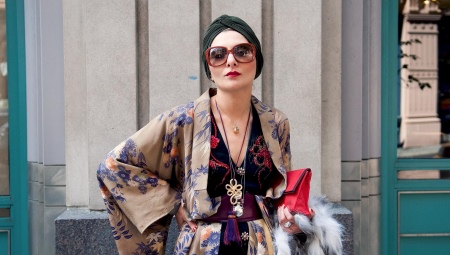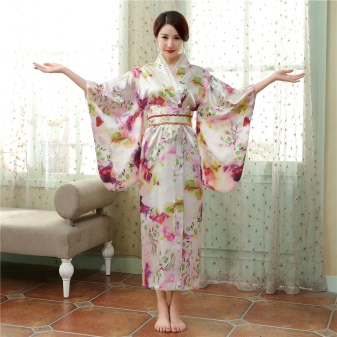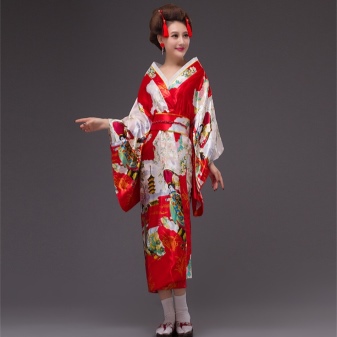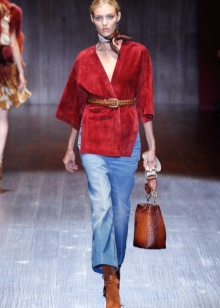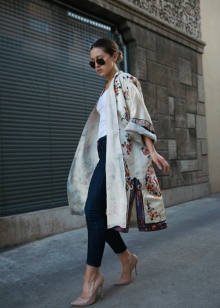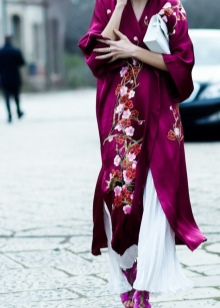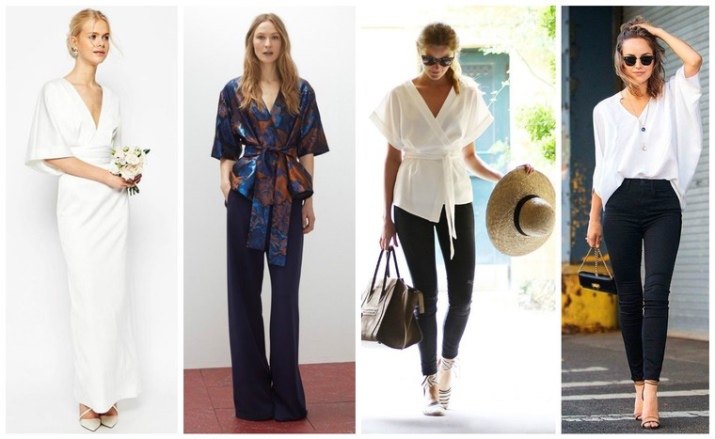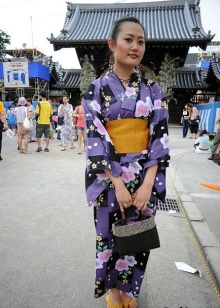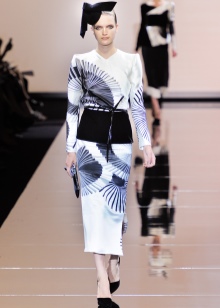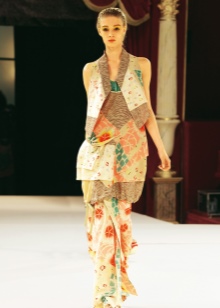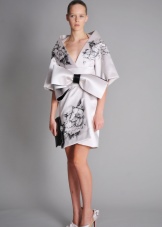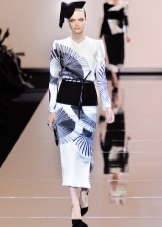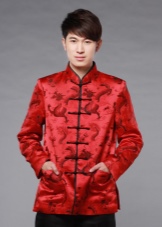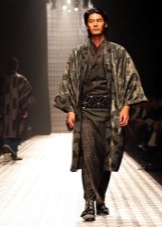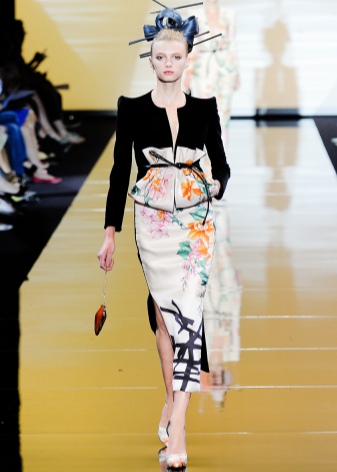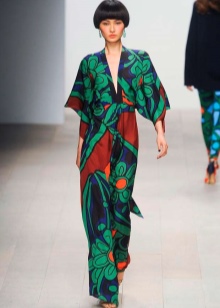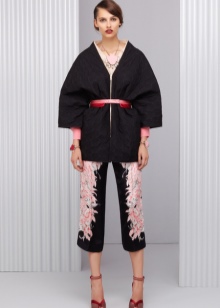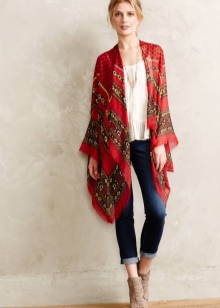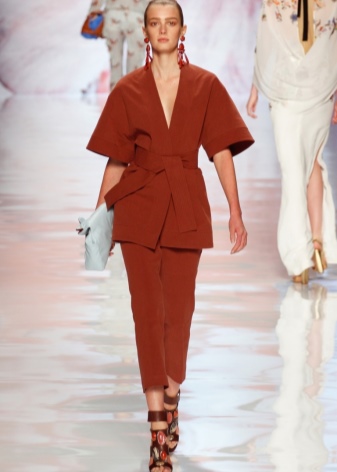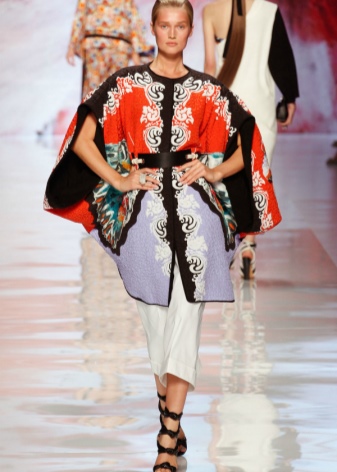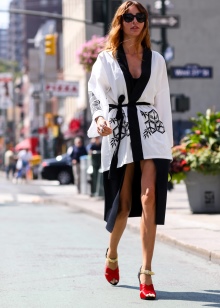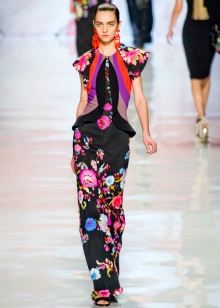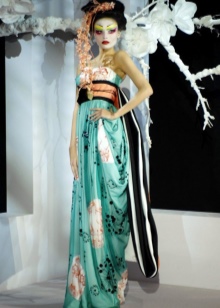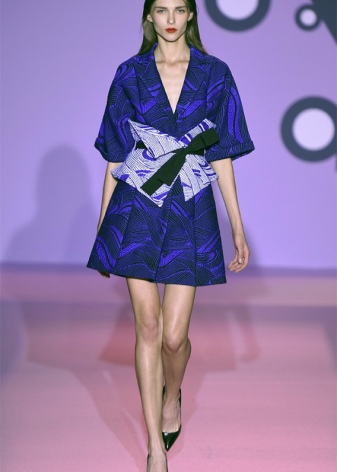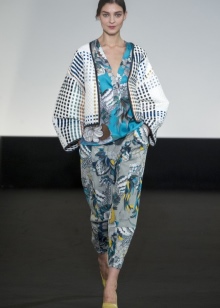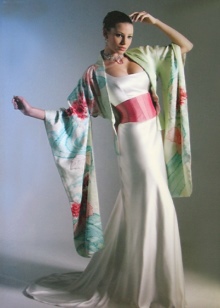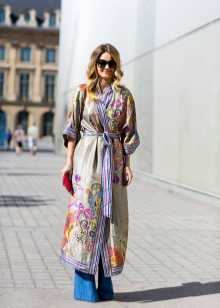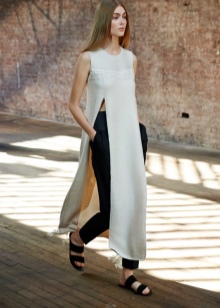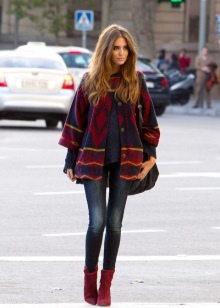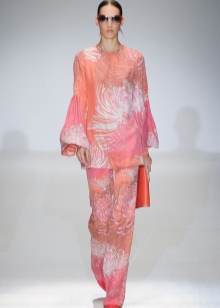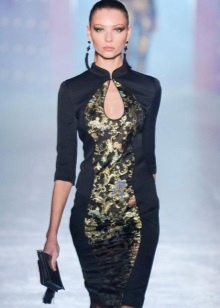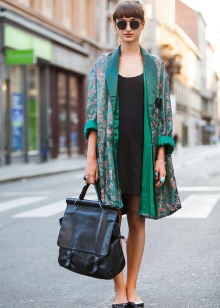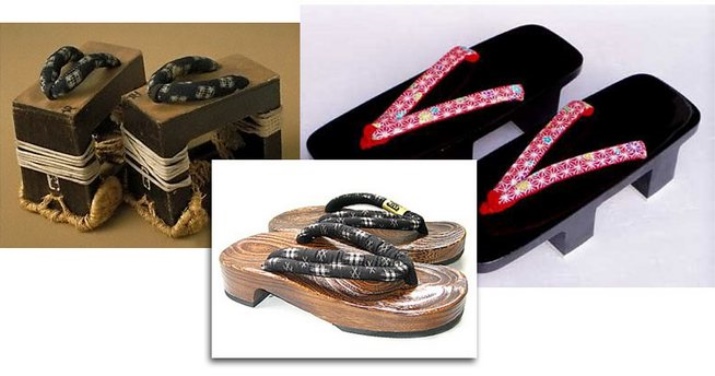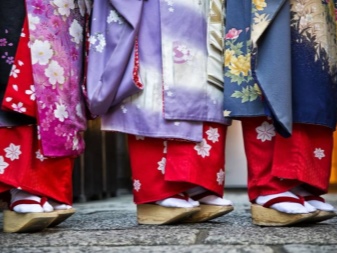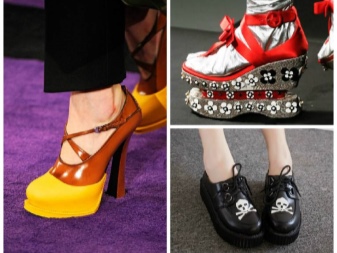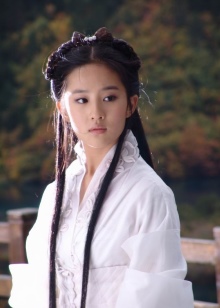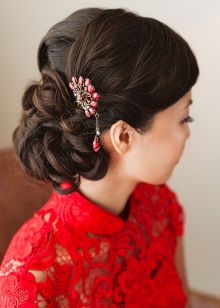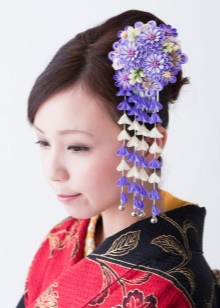The Japanese style of clothing has long been in vogue in Europe and the CIS. It is not surprising, because it combines conciseness, simplicity and at the same time - greatness and grace.
History of style
In ancient times, the mountainous territory of modern Japan was inhabited by barbarian peoples, whose culture, traditions and mentality were formed on the basis of the influence of Chinese culture. Their national clothes resembled a long spacious dressing gown, which became the impetus for the appearance of kimono.
Over time, the appearance of the kimono experienced a certain transformation. The length and width of the sleeves, the length of the costume itself, the fabric, fashion for colors and ornament changed. The traditional look, in which the kimono reached our days, was finally formed at the beginning of the twentieth century. It was then that the integration of Western culture into the culture of Japan intensified, which could not but influence the formation of more free social norms and fashion trends. Women were able to wear comfortable clothes that they would be satisfied with.
In the modern sense of everyday traditional Japanese women's clothing - a spacious blouse or dress with a V-neck and a wide belt or ribbon.
Traditional Japanese attire - kimono earlier translated from Japanese meant clothing in general, however, for a person of Western culture, especially nowadays, it causes associations with the national costume of the Land of the Rising Sun.
Features
The introduction of the Japanese style in the European allowed to create a lot of new beautiful images in both women's and men's fashion.
One of its main characteristics is simplicity of lines and straight cut of clothes. The formation of the national Japanese style was determined by the influence of multiple factors, such as the cultural characteristics of the country, the aesthetic perception of the world, and historical events. For centuries, the fashion for colors, layers of costume, fashion for silhouettes changed, but the principle of cut remained the same.
The love of straight silhouettes is determined by the traditional norms of creating a straight and sharp silhouette, which makes it possible to align the curves of the body. With this, the Japanese seem to emphasize the peculiarities of their national mentality: simplicity and clarity in everything is important for them.
In addition, the fashionable Japanese-style images are multi-layered. This is expressed either in wearing a kimono or dress in kimono style and a belt over, or an unusual and complex cut of clothing that creates the illusion of this very layering.
Japanese-style clothing allows for the addition of roundness with fitted styles, belts, folds on clothes and unusually stitched collars.
Since we are not talking about the traditional national costume of Japan, but about the Japanese style in general, we can say that he has already managed to survive certain transformations and adjust to the fashionable preferences of other countries.
In order to create a fashionable image in the Japanese style, it is not necessary to dress in a heavy present kimono, the weight of which often reached 10-15 kg. It is enough to study the main features of this style and competently combine them with European styles that are familiar to us.
The Japanese style in clothing include clothing wide and straight styles. For example, a skirt-pants free cut, a spacious blouse, straight long or medium length dress. It is assumed that for tailoring use mainly natural fabrics - silk, linen or cotton. Now they often add satin weaving to clothes.
Previously, the decor of clothes was done exclusively by hand.Now this task is quite cope with the help of modern technologies. The main elements of the decor are floral prints, flowers, images of nature.
Often outfits complement the belt-obi, or its modern likeness, which is tied on the back or under the breast in the form of a bow. By the way, chaste women in Japan tied this belt, leaving the bow exactly behind.
It is allowed to combine free, flying silhouettes and fitted ones, in order to focus on the merits of their figure, and not to hide a thin waist.
Body art, piercing, tattoos are considered unacceptable in the Japanese style, since the main feature of the Japanese image, in particular the female one, is precisely modesty, self-esteem and naturalness.
The main thing in creating your fashionable image in the Japanese style is harmony.
Colors
The Japanese attach particular importance to the feelings and emotional state, selecting a specific color for each of them. For this reason, unlike the European approach, it is important for them exactly which symbol lies behind a certain color, and not its brightness or saturation, the visual compatibility of colors. To the extent that shades of the same color in Japanese culture can have different meanings.
Today, the traditional colors for Japanese clothing are: black, white, pink, red, orange, pink, dark blue or indigo, and partly green.
Accessories
The traditional addition to modern Japanese-style clothing is flat shoes or, as an influence of Western fashion, on the platform.
In Japan, it was customary to wear sandals made of leather or wood, which were also popular geta, which were characterized by a high level platform.
Under them wore tabi socks, in which the thumb was separate, for the convenience of wearing sandals. Of course, the socks should have been clean. In the open shoes they quickly got dirty.
Now ballet flats or sabots on a flat sole, which look like traditional geta, are perfect for a Japanese-style look.
When high hairstyles became fashionable in Japan, girls began to decorate them with decorative combs and hairpins with butterflies and flowers.
This is permissible even now, provided that such decorations fit into both the image and the setting. For example, you should not wear a comb, generously decorated with sakura flowers, or a lot of studs with butterflies, if your dress is laconic and restrained.
